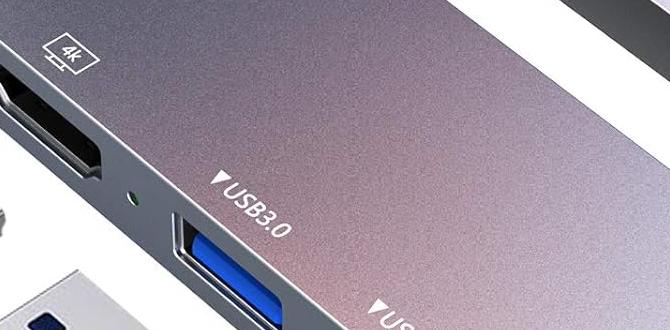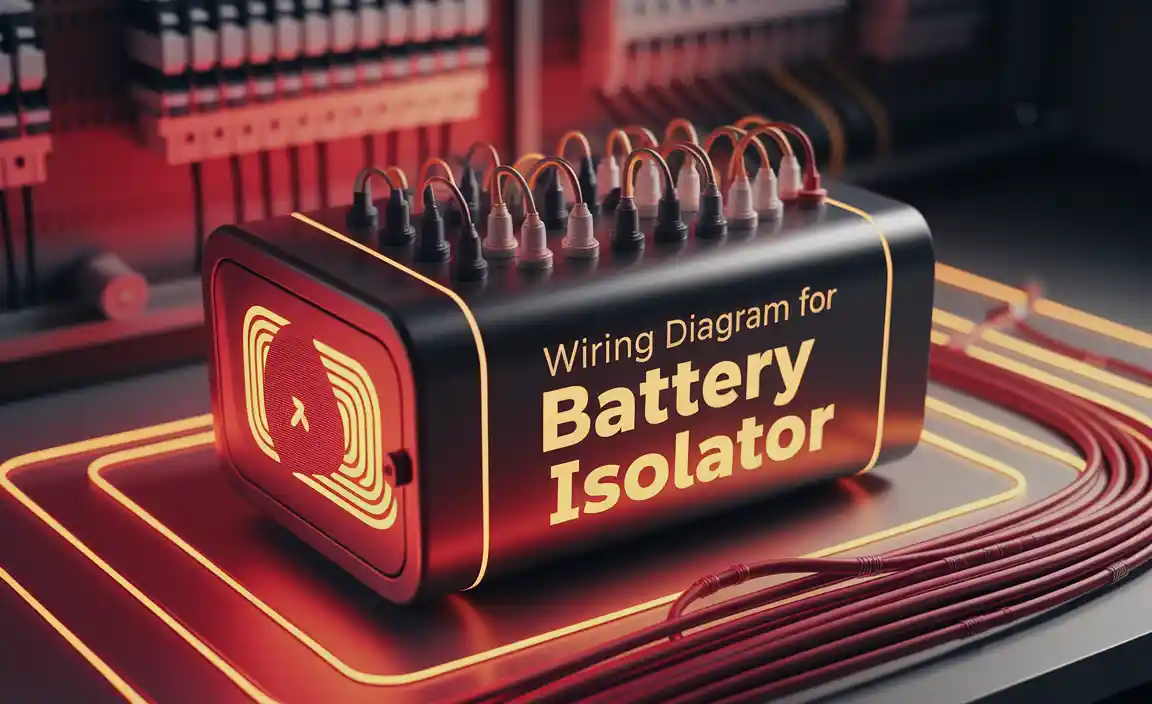Have you ever wondered how to keep your gadgets running safely? Lithium batteries power so many of our favorite devices. Yet, storing them can be tricky. If you don’t store them right, they might lose their power or even become dangerous.
Think about it. Imagine opening a drawer to find a battery that’s swollen or leaking. It’s quite a scary thought! The best way to store lithium batteries is not just about safety, but also about extending their life. Knowing a few simple tips can make all the difference.
Fun fact: Lithium batteries can last longer if you treat them well. They work best when stored in a cool, dry place. When stored correctly, they can keep your devices running longer and safer.
Are you ready to learn the best way to store lithium batteries? Let’s dive in and discover how to protect both your batteries and your devices!
Best Way To Store Lithium Batteries For Longevity And Safety Lithium Batteries Are Widely Used In Various Devices, From Smartphones To Electric Vehicles. Proper Storage Of These Batteries Is Essential To Ensure Their Longevity And Safety. Here Are Some Guidelines And Tips On The Best Way To Store Lithium Batteries, Keeping In Mind Factors Such As Temperature, Charge Level, And Storage Environment. Optimal Charge Levels One Of The Critical Considerations In Storing Lithium Batteries Is Their Charge Level. It’S Advisable To Store These Batteries At A Charge Level Between 40% And 60%. Storing Them At A Full Charge Can Lead To Capacity Loss Over Time, While Fully Discharging Them Can Lead To Irreparable Damage. Ideal Temperature Temperature Plays A Significant Role In The Lifespan Of Lithium Batteries. The Best Way To Store Lithium Batteries Is In A Cool, Dry Place. Aim For A Temperature Range Of 15°C To 25°C (59°F To 77°F). Extreme Temperatures, Especially Heat, Can Degrade Battery Performance And Safety. Humidity Control High Humidity Can Also Adversely Affect Lithium Batteries. Ensure That The Storage Area Is Well-Ventilated And Avoid Environments With Excessive Moisture. A Dehumidifier Can Help Maintain An Appropriate Level Of Humidity. Storage Containers When Storing Lithium Batteries, Use Protective Cases Or Storage Containers That Prevent Short-Circuiting. Avoid Placing Batteries Directly On Metal Surfaces. If Possible, Store Them Upright To Minimize The Risk Of Leakage. Regular Checks It’S A Good Practice To Regularly Check The Stored Batteries If They Are Not Used Frequently. Look For Any Signs Of Swelling, Leakage, Or Corrosion. Regular Checks Can Help Catch Potential Issues Before They Escalate. Conclusion In Summary, The Best Way To Store Lithium Batteries Involves Maintaining The Right Charge Level, Controlling Temperature And Humidity, Using Appropriate Storage Containers, And Conducting Regular Inspections. By Following These Guidelines, You Can Enhance The Lifespan And Safety Of Your Lithium Batteries, Ensuring They Remain Effective For Their Intended Use.
Best Way to Store Lithium Batteries
Storing lithium batteries correctly is crucial for their performance and longevity. First, keep them cool and dry. Extreme heat can cause damage, while cold conditions can reduce efficiency. Did you know that a battery’s lifespan can be doubled by simply making sure it is charged to about 50%? Always store them in a fireproof container and avoid metal surfaces to prevent short-circuiting. Following these tips ensures your lithium batteries last longer and perform better.Understanding Lithium Batteries
Types of lithium batteries and their applications. Importance of proper storage and handling.Lithium batteries come in different types, each with a special job. There are lithium-ion, used in phones and laptops, and lithium polymer, often found in drones and some toys. Storage matters! If you don’t handle them carefully, they can lose power and even become dangerous. Keeping them cool and dry is key. A good rule of thumb? Charge them to about 40% before storing, so they stay happy!
| Type | Uses |
|---|---|
| Lithium-ion | Smartphones, laptops |
| Lithium polymer | Drones, toys |
In short, understanding how to store these batteries can keep them—and you—safe. Remember, a happy battery is a productive battery! So, treat them right and they’ll power your gadgets for a long time.
Ideal Storage Conditions
Recommended temperature and humidity levels. Impact of extreme temperatures on battery lifespan.Storing lithium batteries correctly helps them last longer. Keep them in a cool, dry place. The best temperature is 15 to 25 degrees Celsius. Too much heat or cold can hurt the batteries. For example, extreme heat can make a battery fail faster. Humidity should be low, around 30 to 50 percent. This prevents damage from moisture. Following these rules keeps your batteries safe and ready for use.
What is the best temperature for storing lithium batteries?
The best temperature range is 15 to 25 degrees Celsius. This helps them stay safe and work well.
Recommended humidity level:
- 30 to 50 percent humidity is ideal.
Best Practices for Storing Lithium Batteries
Techniques to maximize battery life during storage. Importance of charge levels before storage.To keep lithium batteries safe and working well, follow these tips. First, store them in a cool, dry place. Avoid heat and humidity. Next, check the battery charge level. It’s best to store them at about 40% to 60% charge. This helps them last longer. Lastly, keep batteries away from metal objects to prevent short circuits.
What should the charge level be before storage?
Before storing lithium batteries, they should be at a 40% to 60% charge. This level helps maintain battery health during storage.
Best Practices:
- Keep batteries at room temperature.
- Avoid fully charging or completely draining them.
- Check them every few months.
Safety Considerations
Risks of improper storage and handling. Fire hazards and prevention methods.Storing lithium batteries safely is important. Improper storage can lead to risks like leaks or potential fires. Keep batteries in a cool, dry place. Avoid hot surfaces or direct sunlight. Here are some safety tips:
- Use a fireproof container.
- Do not mix different types of batteries.
- Check batteries for damage before storage.
Fire hazards can occur if batteries overheat. Ensure they are stored at the right temperature. Always follow safe handling guidelines to prevent accidents.
What should I know about lithium battery safety?
Be aware that storing lithium batteries carelessly can lead to fires and explosions. Always place them in a safe area away from heat sources.
Long-term vs. Short-term Storage
Differences in storage strategies for varying timeframes. How to prepare batteries for longterm storage.When it comes to storing lithium batteries, short-term and long-term strategies are different. For short-term storage, keep them in a cool, dry place and charge them halfway. Think of it like giving your batteries a nap. For long-term storage, you need to do a bit more. First, make sure they are charged to around 40%. This helps keep them happy and healthy. Also, avoid extreme temperatures; think of freezing them in a snowstorm or roasting them in the oven!
| Storage Type | Preparation Steps |
|---|---|
| Short-term | Charge halfway, store in a cool, dry spot. |
| Long-term | Charge to 40%, avoid extreme temperatures. |
Signs of Battery Degradation
Indicators that batteries need to be replaced. Best methods for testing lithium battery health.How can you tell if a lithium battery is losing power? Watch for these signs:
- Shorter usage time
- Battery swelling or leakage
- Device overheating
- Charging issues or slow charging
To check a battery’s health, testing tools come in handy. Many devices have built-in battery health checks. You can also use a multimeter to test voltage levels. Low readings may indicate it’s time for a replacement.
How do I know when to replace my lithium battery?
Look for decreased performance and physical damage. If your device struggles, it’s likely time to change the battery. Regular checks are key!
Recycling and Disposal of Lithium Batteries
Environmental impact of improper disposal. Safe recycling options and regulations.Improperly tossing lithium batteries can harm our planet. They can leak toxic chemicals and pollute soil and water, making Mother Nature very unhappy. Luckily, there are safe ways to recycle these batteries! Many stores and recycling centers have special bins for them. Follow local rules to recycle correctly. Remember, even superheroes need to dispose of their gadgets wisely! Here’s a quick guide on recycling options:
| Option | Description |
|---|---|
| Retail Drop-offs | Many stores accept old batteries for safe recycling. |
| Community Events | Check for local recycling drives; they often collect batteries! |
| Mail-in Programs | Some companies allow you to send batteries back for recycling. |
Always be a responsible battery owner. When you give them a proper farewell, you help keep the earth safe for everyone. Who knew recycling could be so heroic?
Conclusion
In conclusion, the best way to store lithium batteries is in a cool, dry place away from direct sunlight. Keep them at around 40% charge to maintain their health. Always avoid extreme temperatures and ensure they are in a fire-safe container. For more tips, we encourage you to read up on battery care and safety practices!FAQs
What Is The Ideal Temperature Range For Storing Lithium Batteries To Ensure Optimal Performance And Longevity?The best temperature for storing lithium batteries is between 20°C and 25°C (68°F to 77°F). Keeping them in this range helps them work better and last longer. Avoid very hot or very cold places. Extreme temperatures can harm the batteries. So, store them in a cool, dry spot!
How Should Lithium Batteries Be Stored To Minimize The Risk Of Fire Or Explosion?To keep lithium batteries safe, you should store them in a cool, dry place. Make sure they are in their original packaging or in a container. Keep them away from metal objects like coins or keys, which could cause a short circuit. Don’t leave them in hot areas, like your car, because heat can be dangerous. Always check for any damage before you store them, and if they look bad, throw them away safely.
Is It Better To Store Lithium Batteries Fully Charged, Partially Charged, Or Completely Drained?It’s best to store lithium batteries partially charged. Keeping them around 30% to 50% charge helps them last longer. If you store them fully charged or completely drained, they can get damaged. So, think of keeping them in the middle for the best care!
What Type Of Environment (Humidity, Light Exposure, Etc.) Is Best For Storing Lithium Batteries?To store lithium batteries safely, keep them in a cool, dry place. The ideal temperature is around 20°C (68°F). Avoid direct sunlight because it can heat the batteries too much. Also, keep them away from moisture, so they don’t get rusty. This way, your batteries will last longer!
How Can You Properly Maintain And Check The Condition Of Lithium Batteries During Long-Term Storage?To keep lithium batteries safe while stored, make sure they are charged to about 40%. Check them every few months. Look for any signs of damage or swelling. Keep them in a cool, dry place away from sunlight. If they drop below 3 volts, you should recharge them.







